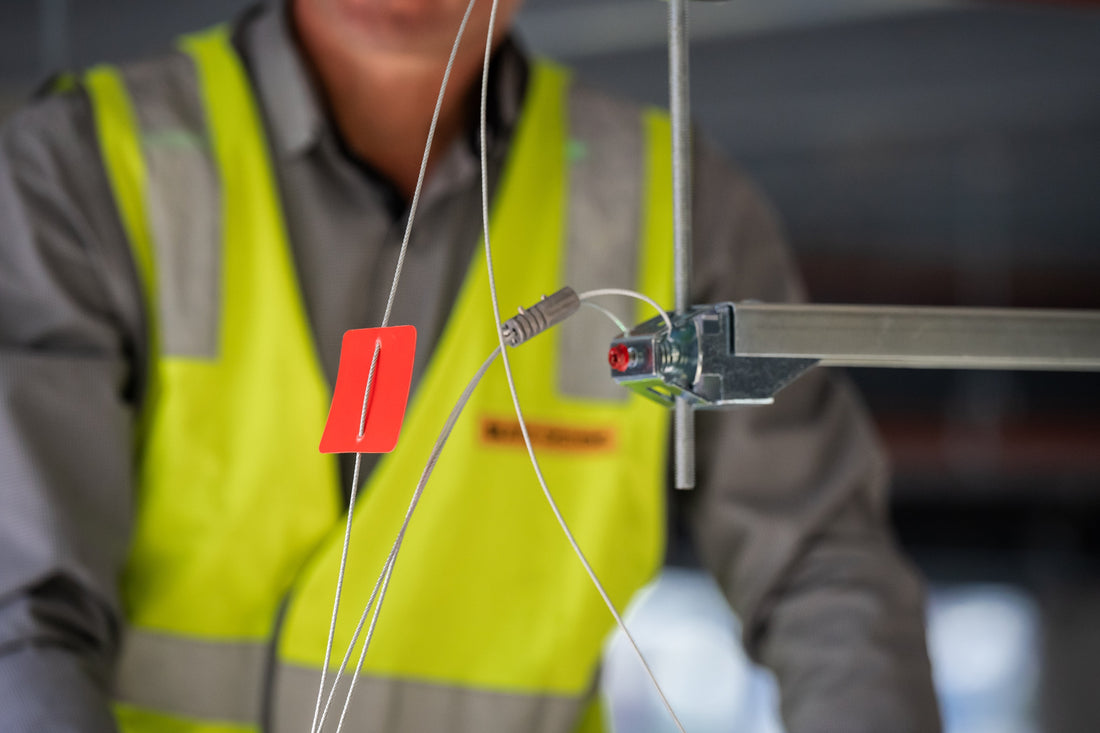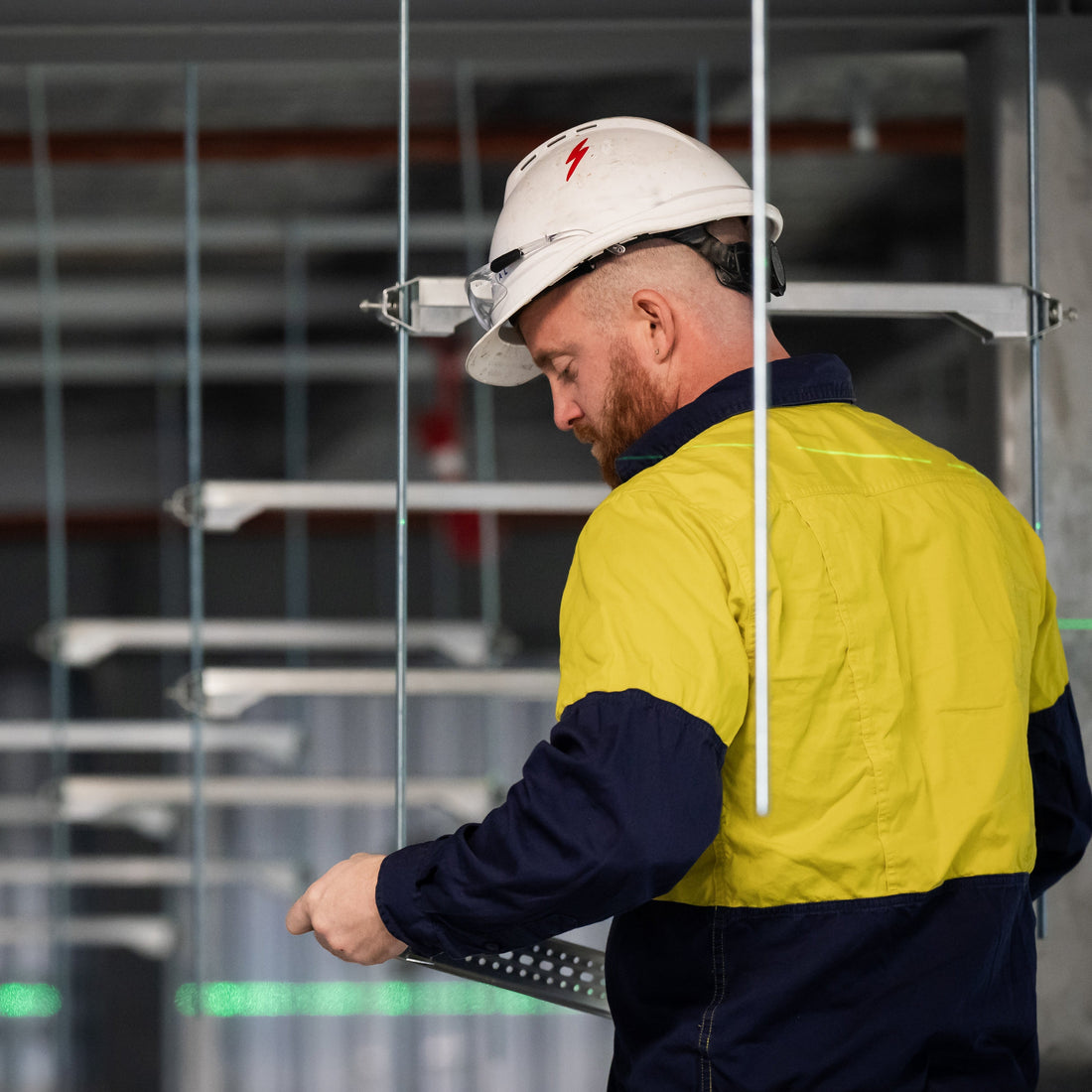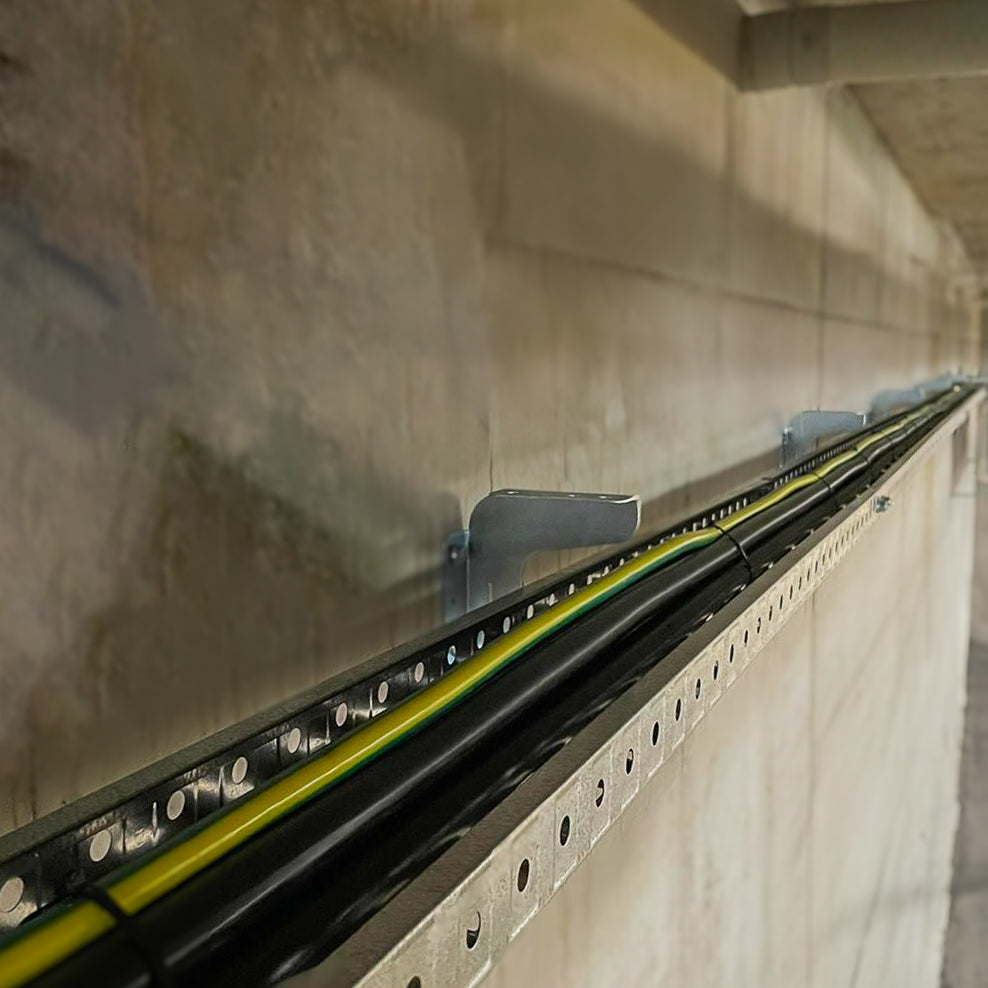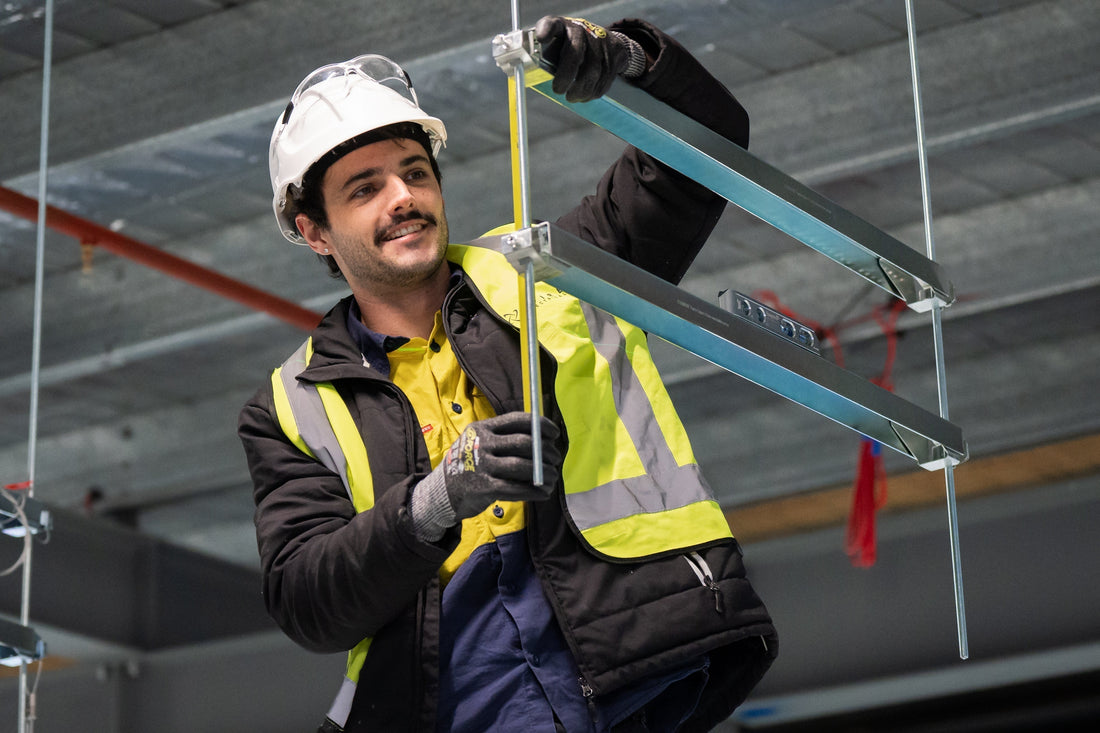What is Structured Cable Wiring? A Guide for Seamless Business Networks by Blitz Systems
Every business has faced that moment: systems grind to a crawl, file uploads stall, and unexpected downtime disrupts productivity. These slowdowns don’t just frustrate employees; they delay projects, upset clients, and ultimately cost the business money.
And while it’s easy to blame devices or software, the underlying issue often runs deeper: the way your cable wiring is organised. Without a structured system in place, networks become messy, harder to manage, and far more prone to expensive outages.
The solution? Structured cable wiring.
While it may come across as just another technical upgrade, however, it forms the backbone of a faster, more reliable, and future-ready business network. Essentially, it’s the standard approach to running voice, data, video, and building-management connections, designed to deliver consistent speed, reliability, and long-term performance.
At Blitz Systems, we bring years of proven, field-tested experience supporting Australia’s key industries, ranging from construction and manufacturing to mining. We specialise in cost-effective, high-quality cable tray systems, modular and cable support solutions that save time and cut labour by up to 70%. Our innovative products, such as the BT3 Tray, StudBite Supports (and more), have been designed and tested to deliver fast, compliant installations while protecting your bottom line.
In this guide, you’ll learn:
-
What is structured cable wiring, and why “spaghetti wiring” won’t cut it.
-
The core components that bring your network infrastructure together.
-
The role of cable tray, cable tray support, cable ladder installation, and accessories.
-
How structured wiring boosts speed, reduces downtime, and scales seamlessly with growth.
-
And why Blitz Systems is the partner you can trust to bring it all together.
Let’s take a closer look at what it takes to build a network that’s smarter, stronger, and built to last.
What Exactly is Structured Cable Wiring?

As briefly mentioned earlier, it’s a standardised, integrated framework that supports all your communication systems, including data, voice, and video, through a single, unified infrastructure. Unlike informal setups where cables snake through ceilings or floors, structured wiring is carefully planned, labelled, and deployed according to standards such as ANSI/TIA and AS/NZS wiring rules.
This helps avoid the pitfalls of "spaghetti wiring", which is essentially a set of tangled, ad-hoc cable runs, which complicate troubleshooting and degrade performance. With structured wiring, every cable has a clear path, purpose, and support system.
A well-built structured cabling system includes the following core elements:
-
Horizontal Cabling: These are the cable runs from telecom outlets to patch panels. Think of it as the final mile to your devices.
-
Backbone Cabling: Linking equipment rooms, telecommunications rooms, and the building entrance, this high-capacity pathway ties everything together.
-
Work Area Outlets: The point where devices such as phones, computers, and sensors connect to the network.
-
Equipment Rooms/Telecom Rooms: Central hubs that house racks, switches, and patch panels.
-
Entrance Facilities: Where external service lines like internet or fibre connect to your internal network.
-
Cross-Connects/Patch Panels: The organisational heart, allowing neat routing and easy re-configuration.
Together, these components create a structured, designed network that is easy to manage, upgrade, and scale.
The Value of Proper Wiring Standards
True structured wiring is more than just running cables; it’s about planning for performance and longevity. It follows strict labelling, separation, and installation standards, paired with durable cable tray and cable tray support to keep things neat and compliant. Done properly, structured cable wiring turns messy installations into an efficient infrastructure that delivers on performance, reliability, and cost-effectiveness.
How Structured Cable Wiring Drives Business Growth and Operational Efficiency

When your network slows down or crashes, every minute of lost productivity hits your bottom line. That’s why structured cable wiring makes sense as a practical investment that saves time, money, and frustration. Here’s how it can deliver measurable results for your business:
-
Improved Reliability & Performance (Up To 30%)
A clean, organised setup means less downtime. With structured systems, diagnosing issues is fast, and consistent high-speed data transfer keeps operations smooth. Research from BICSI, a leading association for the information and communications technology (ICT) industry, shows that organisations using well-designed structured cabling can experience up to a 30% boost in network performance compared to those without structured cabling. -
Scalability & Flexibility
As businesses evolve, so do their network demands, whether it’s onboarding new employees, integrating additional devices, or expanding into new facilities. Structured cabling is designed with growth in mind, offering a standardized framework that eliminates the chaos of ad-hoc wiring. This means you can scale quickly without downtime or complex reconfigurations. By future-proofing your infrastructure, structured cabling ensures your network can keep up with business growth while remaining stable, efficient, and cost-effective. -
Simplified Troubleshooting & Maintenance
Tangled wires can turn even minor network issues into hours of frustration, slowing down IT teams and driving up maintenance costs. With structured wiring, every cable is neatly routed through organized cable tray systems, clearly labeled for quick identification. It transforms troubleshooting from guesswork into a straightforward process that allows you to detect and resolve faults in minutes instead of hours. The result: rapid repairs, minimal downtime, and lower maintenance costs. -
Cost-Effectiveness & Substantial Long-term Value
While structured cable wiring may require a higher upfront investment, the long-term savings are significant. A well-designed system reduces outages, streamlines troubleshooting, and simplifies network changes. In fact, research from The Siemon Company shows that businesses typically see a 147% ROI within five years, driven by lower operational costs and greater productivity, making structured cabling a smart investment that pays off year after year. -
Support for Emerging Technologies
Structured systems are built with the future in mind. Modern businesses rely on VoIP, PoE, IoT devices, and bandwidth-heavy tools like cloud computing, AI, and video conferencing. Without a strong cabling backbone, these systems can slow down. Structured cabling keeps everything running smoothly. By providing the speed, bandwidth, and reliability required for next-gen systems, it prevents bottlenecks and enables your business to adopt new innovations without expensive overhauls. -
Enhanced Safety
Structured wiring isn’t just practical; it’s safer. Instead of a tangled cable mess creating trip hazards and fire risks, wires run neatly through a cable tray and a cable tray support designed for protection. A clean cabling system not only safeguards people and equipment but also keeps your workspace looking organized and professional.
Why Support Systems Are Critical for Organized Cable Wiring

-
Why Cable Management Matters
Managing your structured cable wiring isn’t just about keeping things neat. It’s about performance, safety, and long-term savings. Without a solid support system, cables can sag, overheat, or become tangled, leading to longer installs and higher costs. At Blitz Systems, we design cable tray systems to prevent these headaches, improving installation speed by over 70 % along with cutting labour and material waste. -
Understanding Cable Trays & Support Systems
-
What is a Cable Tray?
Cable trays are load-bearing structures designed to neatly support, organize, and protect your cable wiring across industrial and commercial sites. They keep cables visible, ventilated, and easy to maintain, therefore, eliminating the need for traditional conduit work. -
Types of Cable Trays:
Each tray type is designed with a specific application and goal in mind:
-
Ladder Cable Tray: With its open rung-style construction, ladder trays offer exceptional support, airflow, and strength. They make tasks such as cable ladder installation quick and make future adjustments far easier.
- Perforated Cable Tray: These trays have ventilated bottoms, offering good airflow and lightweight durability. They protect cables from dust and make installations smooth and cost-effective.
-
Solid Bottom Cable Tray
When cables need shielded protection, e.g. in dusty or high-EMI areas, these trays offer full enclosure. They are great for sensitive cable wiring, such as fibre or control systems. -
Wire Mesh (Basket) Cable Tray
Made of interwoven metal, wire mesh trays are flexible, light, and ideal for splicing or routing cable tray wire in complex layouts.
-
Ladder Cable Tray: With its open rung-style construction, ladder trays offer exceptional support, airflow, and strength. They make tasks such as cable ladder installation quick and make future adjustments far easier.
-
Components & Accessories:
-
Cable tray accessories include essential fittings like bends, tees, and reducers, which help maintain orderly cable pathways and allow trays to navigate complex layouts. Bends come in horizontal and vertical forms and enable changes in direction, while tees and crosses create branching routes. Reducers transition between differing tray widths, ensuring seamless, continuous cable routing and preserving system integrity.
-
Cable Tray Hangers are critical support elements that securely suspend cable trays from ceilings or overhead structures. Made from durable materials like steel or aluminum, these hangers (such as rod, channel, or beam clamps) manage the weight of cables while ensuring stability and longevity.
-
Cable Tray Support includes methods to securely mount cable trays, whether overhead, wall-mounted, or underfloor. Supports like hanger rods, trapeze systems, and wall brackets keep trays stable, aligned, and safe under load. They ensure regulatory compliance while making cable routing and maintenance simpler.
-
Cable tray accessories include essential fittings like bends, tees, and reducers, which help maintain orderly cable pathways and allow trays to navigate complex layouts. Bends come in horizontal and vertical forms and enable changes in direction, while tees and crosses create branching routes. Reducers transition between differing tray widths, ensuring seamless, continuous cable routing and preserving system integrity.
-
Why Use Cable Tray Systems?
They provide several key advantages:
-
Cable Tray Systems keep wiring neat and well-structured, eliminating clutter and confusion.
-
Moreover, they provide strong physical support while protecting cables from damage and wear.
-
Because trays allow air circulation around the wiring, they help prevent overheating, therefore extending cable life and improving system reliability.
-
Lastly, organized layouts make maintenance and troubleshooting faster, while offering a scalable setup that adapts to future technology needs.
-
-
-
Other Cable Support Systems:
-
Conduit: Enclosed pipe-like routing used where full protection is needed. They’re ideal for outdoor or hazardous runs, though harder to access.
-
J-Hooks & D-Rings: Simple mounts for small cable runs. While they are suitable for high-density networks, but usually serve only as a temporary solution.
-
Velcro Ties: Much easier to adjust than zip ties, as they allow cable wiring to remain flexible during installation or upgrades.
-
-
Importance of Correct Installation
Even the best cable tray system can underperform if it isn’t installed properly. Correct installation ensures cables are laid out in line with industry standards, preventing overheating, sagging, or unnecessary strain on the wiring. Professional installers also make sure the right tray sizes are used, so your system has enough capacity not only for current loads but also for future expansion.
This isn’t just about efficiency; it’s about compliance and long-term reliability. Poorly installed trays can lead to unexpected downtime, safety risks, or even code violations during inspections.
That’s why it’s crucial to work with solutions that are tested and proven. For example, Blitz’s Systems’ STUDBITE Supports and modular trays are independently tested for fire and seismic performance and engineered for compatibility and safety across Australia, helping ensure your cable infrastructure remains both durable and compliant.
THE BLITZ SYSTEMS ADVANTAGE: Reliable, Future-Ready Cable Wiring Solutions

-
Expertise & Experience
At Blitz, we’re not just another supplier; we intend to become a partner you can count on in building an efficient, high-performance cable wiring infrastructure. With years of experience delivering modular cable tray systems for industries across Australia, including construction, manufacturing, and mining, we bring proven, field-tested know-how to every project.
-
Certified Professionals
Each project is handled by certified technicians with in-depth expertise in cable tray installation and support systems. Their knowledge ensures that installations not only comply with Australian standards but also align with international best practices for safety, performance, and longevity. By combining technical precision with real-world experience, our team minimises risks, avoids cost overruns, and delivers systems you can rely on well into the future.
-
Comprehensive Services
Our service continuum covers every phase of your project:
-
Design & Planning: We tailor solutions around your facility’s layout, load requirements, and environment. Each plan is built for efficiency and scalability, ensuring your system is easy to install and adaptable to future growth.
-
Installation: Our systems, like cable tray installation, streamline labour and remove onsite frustrations, cutting install time by up to 70 % via modular setups.
-
Testing & Certification: All cable tray systems undergo rigorous testing to verify compliance with fire (AS/NZS 3013) and seismic (AS/NZS 1170.4) standards. This ensures durability, safety, and regulatory approval, giving you confidence that your infrastructure will perform reliably even under extreme conditions.
-
Maintenance & Support: From routine inspections and preventative checks to system upgrades and modifications, our team provides ongoing support to keep your cable tray infrastructure reliable, compliant, and ready for future demands.
-
Advanced Solutions: We also offer fibre optics-ready systems and custom cable tray accessories, engineered to support high-speed data demands, reduce signal interference, and adapt seamlessly to unique layouts or complex site configurations.
-
Design & Planning: We tailor solutions around your facility’s layout, load requirements, and environment. Each plan is built for efficiency and scalability, ensuring your system is easy to install and adaptable to future growth.
-
Quality & Compliance
Our products are independently tested and certified for fire/seismic compliance and engineered to meet AS/NZS wiring rules and electrical support standards. In addition to ensuring safety and durability, this also helps contractors and businesses minimize risks, delays, and on-site rework.
-
Client-Focused
We understand the pressures you face: tight schedules, budget constraints, and strict safety requirements. Our systems are designed to eliminate these roadblocks. Every solution is optimised for fast installation, long-term compliance, and reliable performance, ensuring your projects stay on time, within budget, and deliver as expected.
Curious about what structured cable wiring can achieve? Visit our product pages or explore recent case studies to see how we’re enabling businesses across Australia to achieve peak efficiency and cost savings.
CONCLUSION
Structured cable wiring is more than just an infrastructure component; it’s the backbone that keeps modern businesses running efficiently and reliably. By choosing a well-organised approach that includes proper cable tray systems, reliable supports, and precision installation standards, you gain better day-to-day performance, greater flexibility for the future, and long-term cost savings.
Blitz Systems’ solutions are independently tested to meet critical Australian standards such as AS/NZS 3000 (Wiring Rules), AS/NZS 3013 (Fire Rating), and AS/NZS 1170 (Structural Load). That means you get safer, compliant installations that resist fire and structural failure while saving time and reducing onsite headaches.
Stop Losing Time to Slow Networks & Downtime
Partner with Blitz Systems, Australia’s trusted experts in cable wiring. CONTACT US for an obligation-free consultation. Our experts will demonstrate how our solutions can help you save time, lower labour costs by up to 70%, and keep projects on track.
Contact Our Team NowFrequently Asked Questions
-
What is the difference between structured cabling and traditional cabling?
Structured cabling uses a planned, modular system. Traditional or “spaghetti” wiring is ad-hoc and messy, making maintenance harder.
-
How long does structured cable wiring last?
Typically 10–15+ years. Longevity improves with proper installation, ventilation via cable trays, and timely upgrades.
-
Is fibre optic cable wiring necessary for my business?
Not always unless you need ultra-high bandwidth. Blitz Systems supports both copper and fibre-ready systems for scalable performance.
-
How often should a business’s cable wiring be upgraded?
Review every 5 years or when bandwidth demands grow. Using cable tray systems simplifies upgrades dramatically.
-
What are the common types of cable tray systems?
Main types include ladder cable trays, perforated trays, solid-bottom trays, and wire mesh trays. Each offers different levels of support, airflow, and protection.
-
Why is professional cable tray installation important?
Expert installers ensure proper sizing, support (per AS/NZS 1170), and compliance with fire-rated standards (AS/NZS 3013), reducing risks and rework.
-
How do I know if my existing cable wiring needs an upgrade?
Frequent downtime, poor performance, or tangled cabling are clear signs. If upgrades are painful or slow, it's time to modernise.
-
Do Blitz Systems offer emergency cable wiring repairs?
Yes, we do. Our support team is Australia-wide and ready for timely onsite solutions to keep your business running.






